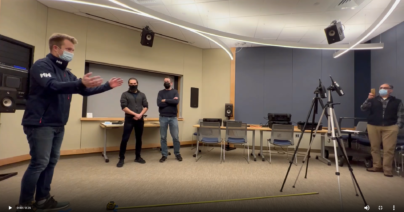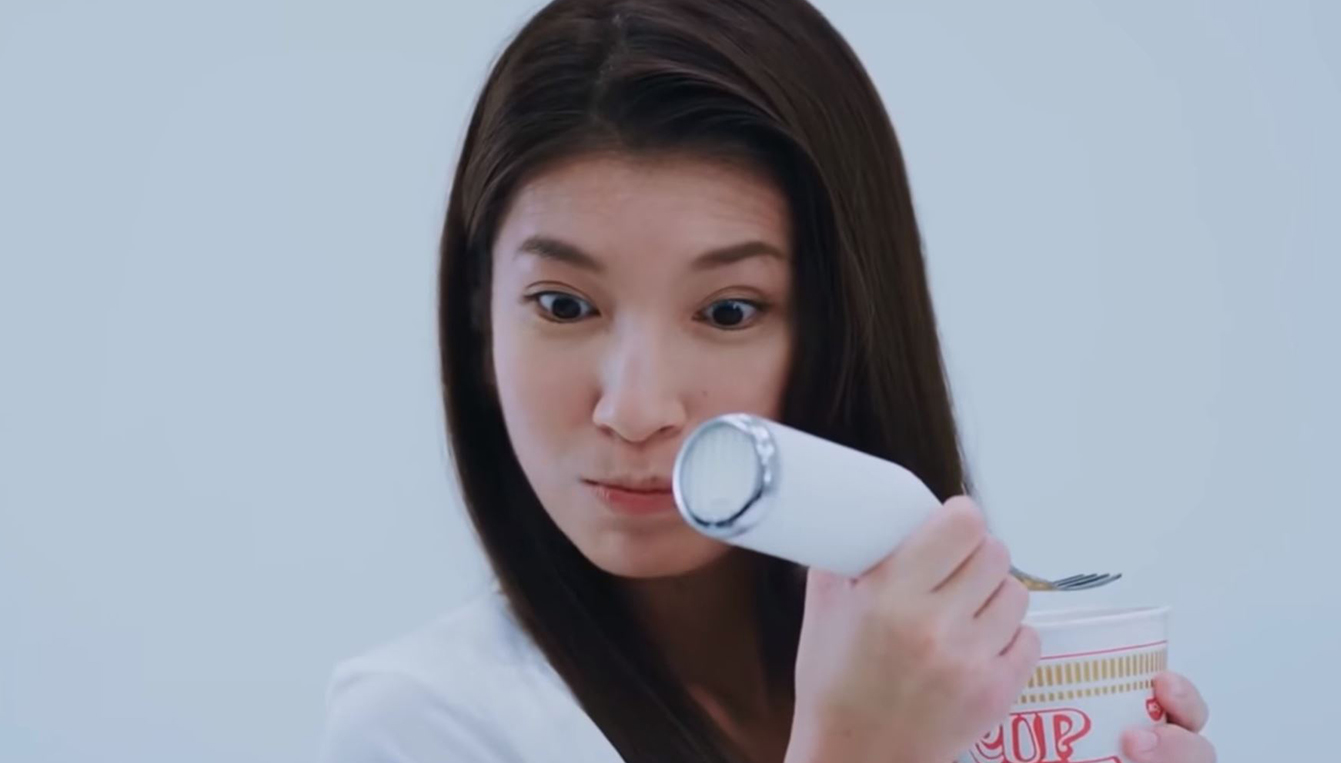 News
News
Acentech Records Guinness World Record for Loudest Clap
Acentech recorded the new Guinness World Record for the loudest clap! Steven Wallace clapped a peak measurement of 117 dBA, breaking the previous world record of 113 dBA….

Recently the Boston Globe featured a “noise-cancelling fork” as their innovation of the week. The article explained that the noodle company, Nissan, developed the fork in response to complaints about the slurping sounds that result from the “right way” to eat noodles in general, and Nissan “Cup of Noodles” in particular.
Above: a video of consumers trying Nissin’s noise cancelling fork
Apparently westerners are especially put off by the slurping sound required, according to the Japanese, to enjoy the full taste of noodles. So Nissan developed a solution – a $130 “noise cancelling” fork. However, noise cancelling is a misnomer in this case. Having listened to a video which captures the sound and the reaction of diners nearby, I would suggest calling it a “noise distracting fork”.
So, what is the difference? Noise cancellation, also known as active noise cancellation or active noise reduction, actually attempts to annul the noise reaching your ear. The sound we hear is created by pressure waves moving through the air. Noise cancellation creates a second wave, out of phase with the first one, resulting in destructive interference. If the amplitudes of the two waves are very similar they will subtract, resulting in the noise actually being reduced. To achieve noise cancellation you need a microphone, a speaker and a sophisticated algorithm capable of instantaneously listening to the sound (with the microphone) and producing the opposite wave (with the speaker), and having this wave align in time and space with the original sound. This is no easy task, and it can usually only be accomplished in very limited circumstances.
What is happening with the noise cancelling fork? The “noise cancelling fork” has a microphone, and a sophisticated algorithm, and it uses a speaker. The speaker, in this case, is your cell phone running an app developed by Nissan. Nissan recorded the sounds made by skilled slurpers, resulting in a data base of slurping sounds. They studied these sounds looking for appropriate substitutes. They settled on several sounds which were incorporated into the app.
The process of “noise cancellation” in the fork goes like this: The user turns on the app already downloaded into their cell phone. As the slurping begins the microphone in the fork picks up the initial sound and transmits a Bluetooth signal to the cell phone. In response to that signal the cell phone plays the sound already existing in the app. This sound has nothing to do with the original sound in terms of loudness, frequency or phase. This sound cannot create destructive interference. It cannot cancel the original sound.
Another approach to reducing the distraction of intrusive sound is called masking. With masking, a sound is continuously introduced into the environment, resulting in an increase in the background noise level. Studies have been done to determine the type of sound mostly likely to mask intrusive noises without itself being distracting or annoying. In an environment with higher background noise intrusive noises (slurping perhaps) are less obvious. Masking is often used in open office plans to lessen the distractions of noise from a nearby cubicle. The “annoying” noise hasn’t been eliminated or even reduced but because the surrounding noise is somewhat higher we perceive it less.
Clearly, the noise cancelling fork is not using masking. Noise is not being introduced into the environment to raise the background sound level. And the noise produced does not blend, unnoticed, into the environment. To my way of thinking Nissan has developed a third alternative. As the slurping begins the cell phone creates a second sound which draws your attention away from the person and toward the person’s cell phone. Thus, I think, noise distracting fork is a more accurate label.
Watch the video here and decide for yourself: noise cancelling, noise masking, or noise distracting!